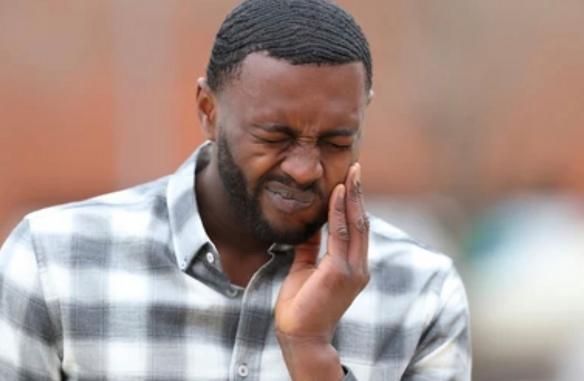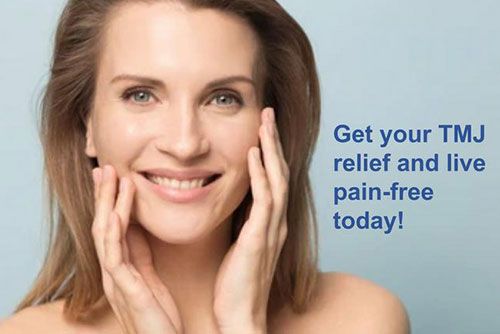
Bruxism is an oral parafunctional activity that commonly occurs in most people at some point in their lives. The two main characteristics of this condition are grinding of the teeth and clenching of the jaw.” These actions usually occur during a person’s sleeping hours, but often they occur during the day. It is also well established that several anti-depressant medications, such as SSRIs, are significant aggravators of the bruxism process. In many cases, changing medications can significantly reduce bruxism.
Bruxism is one of the most commonly known sleep disorders. Chewing is a neuromuscular activity controlled by a subconscious process, but more highly controlled by the brain. During sleep, the subconscious process may become active, while the higher control is inactive (asleep), resulting in bruxism. The most common symptoms are earaches, headaches, depression, eating disorders, anxiety, and chronic stress. Bruxism can also contribute to the severity of periodontal bone loss, severe wearing of teeth, and gum recession.
Why should I seek treatment for Bruxism?
- Gum recession. Bruxism is a leading cause of gum recession and tooth loss. Grinding can damage the soft tissue directly and lead to loosened teeth and deep pockets where bacteria are able to colonize and decay the supporting bone.
- Severe tooth wear. Bruxism leads to tooth grinding that can eventually shorten and blunt the teeth, and clenching forces may result in fractured teeth or damage to tooth nerves.
- Facial pain. Tooth clenching and grinding can result in muscle dysfunction leading to pain in the myofascial region and in many cases, incapacitating migraine headaches.
- Bite trauma. The abnormal wear patterns on the occlusal (chewing) surfaces of the teeth can lead to fractures, which, if left untreated, may require restorative treatment at a later time.
- Arthritis. In the most severe cases, bruxism can eventually lead to painful arthritis in the temporomandibular joints (TMJ) resulting in degenerative bone loss and a shifting bite.

Bruxism Treatment
A bite is considered healthy when all or most of the teeth are present and not destroyed by normal daily usage.
It is destructive when teeth show wear, looseness or when TMJ (jaw joint) damage is seen. Bite therapy helps restore a bite that can function without damage and destruction.
Bruxism Treatment Options
Though there is no known cure for bruxism, there are a variety of devices and services available through our office to help treat bruxism:
- Bite Guards. An acrylic mouthguard can be designed from teeth impressions to minimize the abrasive grinding action during normal sleep. Bite guards must be worn on a long-term basis to help prevent tooth damage and bone loss.
- Medication changes: Certain medications have been shown to increase or decrease the frequency and severity of bruxism. Medication alterations may be considered in conjunction with your medical physician.
- Physical Therapy: Other specialists, such as a Physical Therapist or an Oral Pathologist may be able to discuss exercise or posture techniques that may be helpful.
- Botox®: As a last resort, Botox® can be injected into the muscles responsible for bruxing by disabling them enough to prevent grinding, but not enough to disrupt normal functions like speaking and chewing.
Once bruxing is under control, Dr. Bramanti can recommend a variety of dental procedures to restore the pleasant esthetic appearance to your smile, such as crown application, gum grafts, and crown lengthening.
The therapy may include:
- Orthopedic Appliance Therapy using a custom-fitted and adjusted orthopedic bite splint to keep the teeth apart, allow the muscles to relax, unload the TMJs to permit healing and protection of the functional masticatory system. The orthopedic appliance is worn during the day, at night, or both.
- Reshaping the biting surfaces of the teeth and eliminating spots of excessive pressures where the teeth are brought into contact. This is done by carefully dividing bite pressures evenly across all the teeth.
- Braces/Invisalign to reposition misaligned or drifted teeth.
- Replacement of old, worn out, or damaged fillings.
- Reconstruction of badly worn and damaged teeth.
If you believe you are bruxing your teeth or have severely worn teeth, contact Dr. Bramanti for a consultation. Dr. Bramanti will assess your condition, explain various treatment possibilities, and aid you in finding the best path of care to address your bruxism concerns.
Call today at 559-438-7800.
Bruxism is an oral parafunctional activity that commonly occurs in most people at some point in their lives. The two main characteristics of this condition are grinding of the teeth and clenching of the jaw.” These actions usually occur during a person’s sleeping hours, but often they occur during the day. It is also well established that several anti-depressant medications, such as SSRIs, are significant aggravators of the bruxism process. In many cases, changing medications can significantly reduce bruxism.
Bruxism is one of the most commonly known sleep disorders. Chewing is a neuromuscular activity controlled by a subconscious process, but more highly controlled by the brain. During sleep, the subconscious process may become active, while the higher control is inactive (asleep), resulting in bruxism. The most common symptoms are earaches, headaches, depression, eating disorders, anxiety, and chronic stress. Bruxism can also contribute to the severity of periodontal bone loss, severe wearing of teeth, and gum recession.
Why should I seek treatment for Bruxism?
- Gum recession. Bruxism is a leading cause of gum recession and tooth loss. Grinding can damage the soft tissue directly and lead to loosened teeth and deep pockets where bacteria are able to colonize and decay the supporting bone.
- Severe tooth wear. Bruxism leads to tooth grinding that can eventually shorten and blunt the teeth, and clenching forces may result in fractured teeth or damage to tooth nerves.
- Facial pain. Tooth clenching and grinding can result in muscle dysfunction leading to pain in the myofascial region and in many cases, incapacitating migraine headaches.
- Bite trauma. The abnormal wear patterns on the occlusal (chewing) surfaces of the teeth can lead to fractures, which, if left untreated, may require restorative treatment at a later time.
- Arthritis. In the most severe cases, bruxism can eventually lead to painful arthritis in the temporomandibular joints (TMJ) resulting in degenerative bone loss and a shifting bite.

Bruxism Treatment Options
Though there is no known cure for bruxism, there are a variety of devices and services available through our office to help treat bruxism:
- Bite Guards. An acrylic mouthguard can be designed from teeth impressions to minimize the abrasive grinding action during normal sleep. Bite guards must be worn on a long-term basis to help prevent tooth damage and bone loss.
- Medication changes: Certain medications have been shown to increase or decrease the frequency and severity of bruxism. Medication alterations may be considered in conjunction with your medical physician.
- Physical Therapy: Other specialists, such as a Physical Therapist or an Oral Pathologist may be able to discuss exercise or posture techniques that may be helpful.
- Botox®: As a last resort, Botox® can be injected into the muscles responsible for bruxing by disabling them enough to prevent grinding, but not enough to disrupt normal functions like speaking and chewing.
Once bruxing is under control, Dr. Bramanti can recommend a variety of dental procedures to restore the pleasant esthetic appearance to your smile, such as crown application, gum grafts, and crown lengthening.
Bruxism Treatment
A bite is considered healthy when all or most of the teeth are present and not destroyed by normal daily usage.
It is destructive when teeth show wear, looseness or when TMJ (jaw joint) damage is seen. Bite therapy helps restore a bite that can function without damage and destruction.
The therapy may include:
- Orthopedic Appliance Therapy using a custom-fitted and adjusted orthopedic bite splint to keep the teeth apart, allow the muscles to relax, unload the TMJs to permit healing and protection of the functional masticatory system. The orthopedic appliance is worn during the day, at night, or both.
- Reshaping the biting surfaces of the teeth and eliminating spots of excessive pressures where the teeth are brought into contact. This is done by carefully dividing bite pressures evenly across all the teeth.
- Braces/Invisalign to reposition misaligned or drifted teeth.
- Replacement of old, worn out, or damaged fillings.
- Reconstruction of badly worn and damaged teeth.
If you believe you are bruxing your teeth or have severely worn teeth, contact Dr. Bramanti for a consultation. Dr. Bramanti will assess your condition, explain various treatment possibilities, and aid you in finding the best path of care to address your bruxism concerns.
Call today at 559-438-7800.
